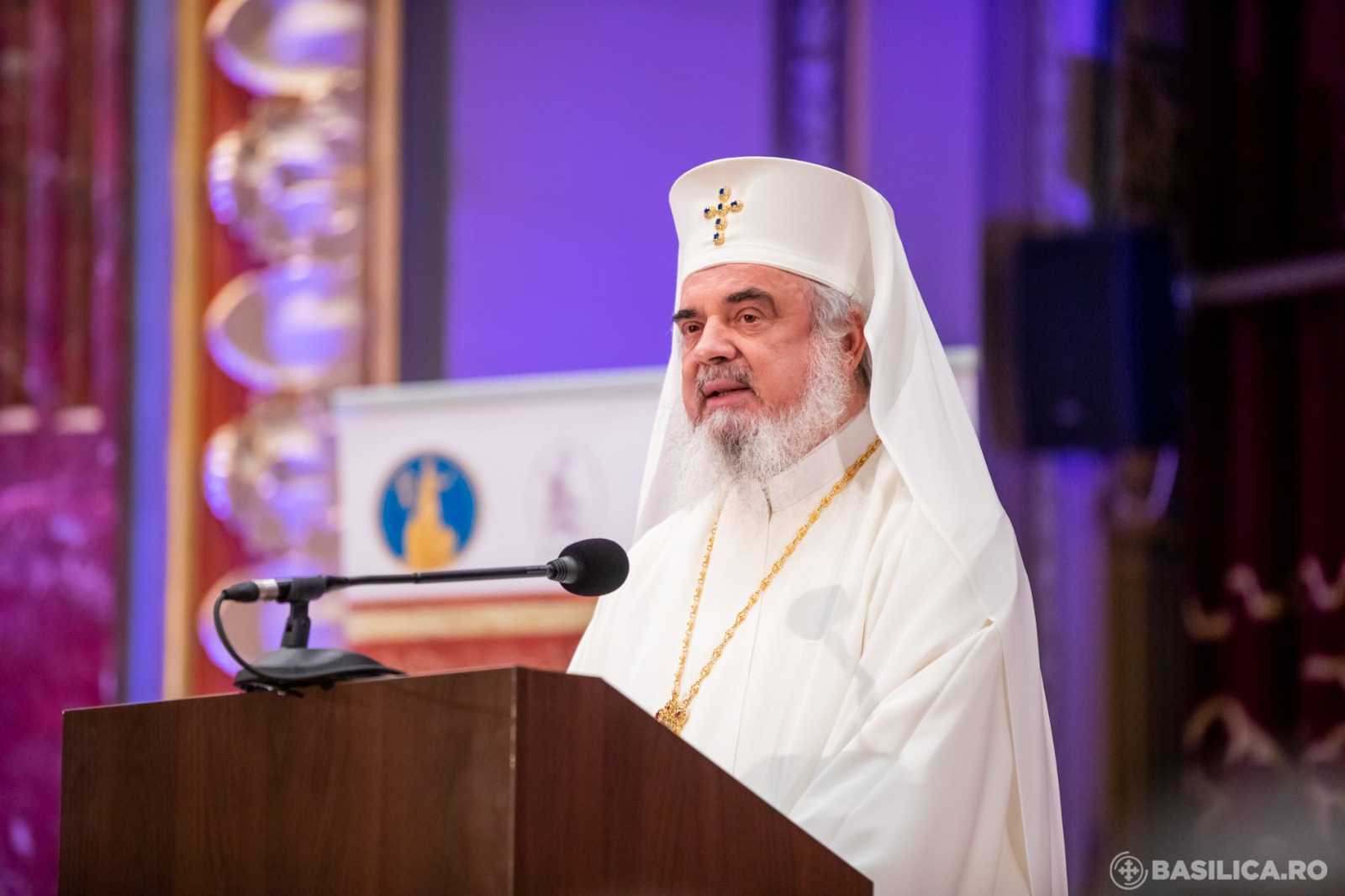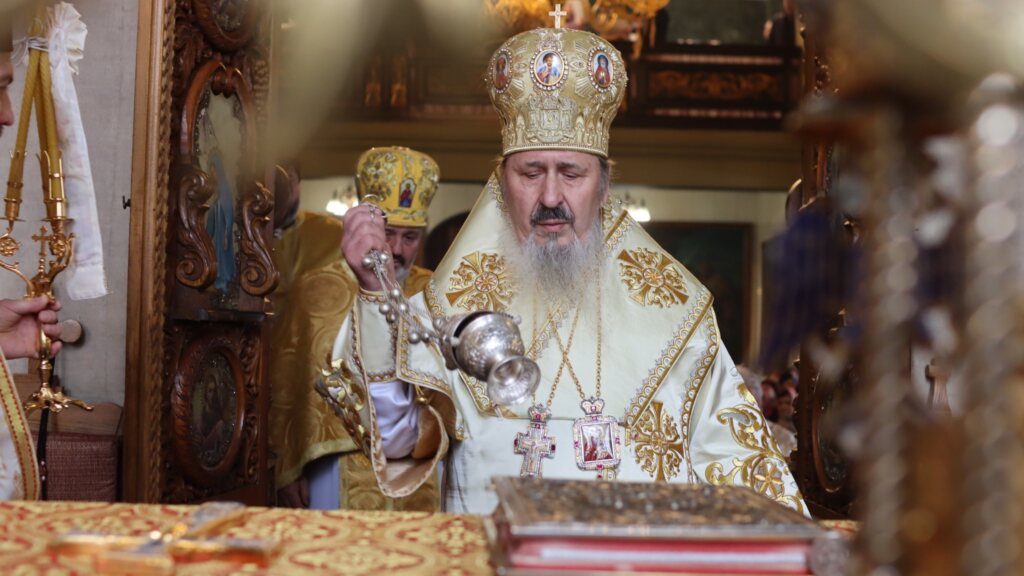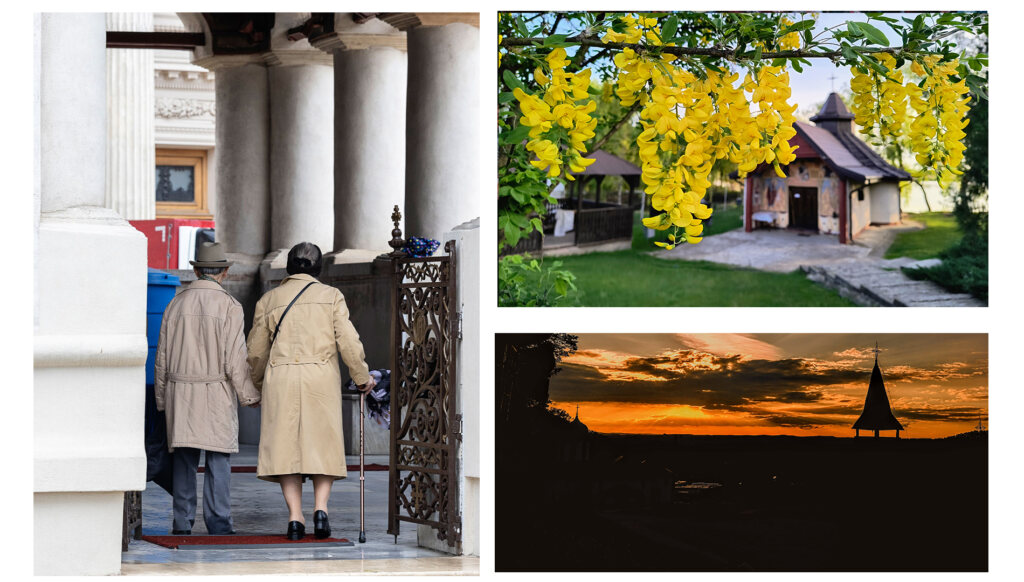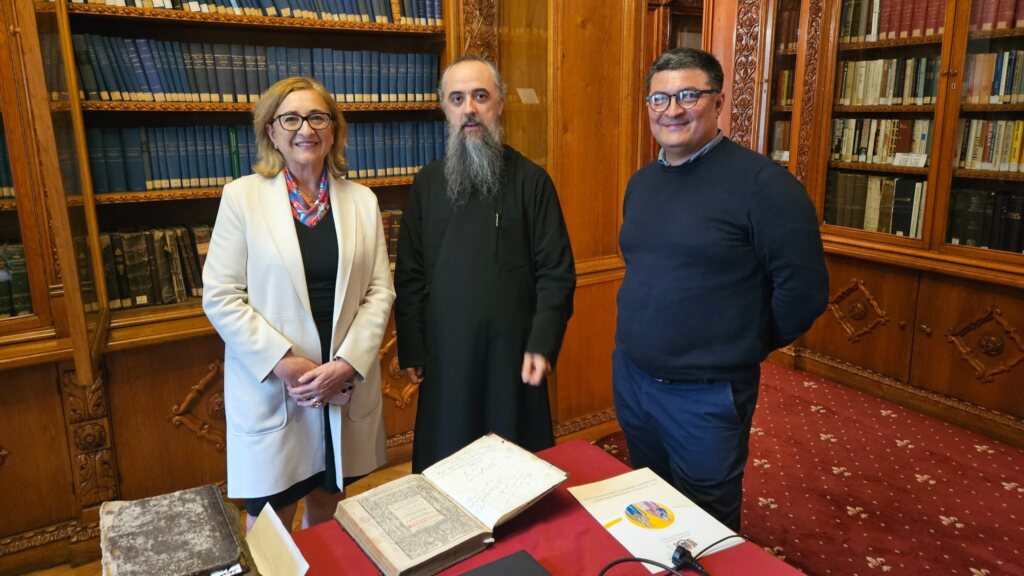In his message on Romania’s National Culture Day, Patriarch Daniel referred to the connection between worship and culture but also stressed the liturgical and cultural value of cemeteries.
“When religious worship bore fruit in culture, it opened up to universality; and when the culture was inspired by worship, it opened up to eternity,” His Beatitude Patriarch Daniel noted in his official message on January 15.
The Patriarch of Romania entitled his message ‘The commemoration of the dead and the cult of heroes support the culture of gratitude and communion between generations.’
In the Patriarch’s opinion, through culture “as man’s multiple relationship with nature and society, the spiritual, creative human dimension is expressed.”
“Created in the image of God the Creator, man expresses his creative capacity through the way he understands and uses nature, transfiguring nature into culture. The direct connection of the creative man with God the Creator of the universe is called worship. Man’s connection with God’s creation, with the world, is called culture.”
The commemoration of the dead and the cult of heroes support the culture of gratitude and communion between generations: full text
The Holy Synod of the Romanian Orthodox Church declared 2021 a Commemorative Year of the reposed in the Lord, in order to highlight and promote the liturgical and cultural value of cemeteries.
From the point of view of our spiritual identity, the cemetery is a memorial memento of time, as the memorized heritage creates the spiritual roots necessary to preserve our own identity, intergenerational communion, and the continuity in the history of a nation’s spirit.
In addition to the religious or cultic value of cemeteries, they also have the value of a people’s spiritual heritage, thus becoming a national cultural heritage. Etymologically, heritage connects us to our parents and homeland; it gives us identity in history and inspires us for the future.
The commemoration of the deceased and the cult of heroes contribute to the development of a culture of gratitude and communion between generations. Their eternal remembrance from generation to generation means their eternal commemoration from generation to generation.
Through culture, as a multiple relationship of man with nature and society, the spiritual, creative human dimension is expressed. Created in the image of God the Creator, man expresses his creative capacity through the way he understands and uses nature, transfiguring nature into culture.
The direct connection of the creative man with God the Creator of the universe is called worship. Man’s connection with God’s creation, with the world, is called culture.
When God is perceived as present in the world, culture has a deep religious dimension, and the surrounding nature is perceived as a gift and nonverbal language of God to man, an intelligent being, called to receive the gift, to decipher, through spiritual contemplation and scientific research, its multiple meanings and to make of it, through cultivation, that is, through creative diligence and merciful generosity, an intelligent and loving response to the intelligence and love of God the Creator for His creation.
Thus, the entire authentic human culture can become intelligent and sensitive worship brought to the Creator of the universe, and the religious worship remains the original matrix and paradigm of culture.
When religious worship bore fruit in culture, it opened up to universality, and when the culture was inspired by worship, it opened up to eternity.
The Romanian Orthodox cemeteries, some inscribed in the national cultural heritage of Romania, others including valuable funerary artistic monuments dedicated to national personalities in their perimeter, emphasize an essential spiritual dimension: the continuity over time and the capacity of communion of a people with past generations.
Romanian Orthodox cemeteries are places of silence and pilgrimage; in them, we find the graves of our ancestors, our forerunners, as well as graves or funerary monuments of the great national personalities, people of culture, art, scientists, political or religious personalities, the graves and monuments of the heroes who sacrificed themselves for the unity, freedom and dignity of the Romanian people, the heroes of the Romanian revolution of December 1989, as well as the graves of the martyred confessors of Christ the Lord in the prisons of the totalitarian communist regime; their commemoration with gratitude is not only a moral duty of us, of all, but it is also an act of spiritual health because only gratitude or commemoration is a living relationship stronger than a person’s physical death.
The cemetery has a deep ecclesial and cultural meaning in our Romanian Orthodox Christian tradition. The care of the sacred space in which the bodies of the reposed are buried is a duty and a responsibility of Christians to keep burning the flame of remembering the dead from generation to generation, especially the heroes who sacrificed themselves for the defence of the faith and the homeland.
This respect for cemeteries is a true culture of the Romanian soul that believes, feels and confesses that love is stronger than death.
The multitude of prayer lists and memorial services for those who have died or fallen asleep in the Lord and for national heroes is a powerful factor in cultivating the consciousness of our national identity, unity and continuity.
Prayers and the remembrance of those asleep in the Lord, the liturgical and cultural value of cemeteries are elements of great steadfastness, continuity and unity throughout the generations.
In this sense, it is significant that the “prayer list” was the basis of the Romanian Chronicles, the suggestive example being the Prayer list from Bistrița Monastery, Neamţ, one of the oldest documents of the Romanian medieval culture, which contains, in addition to names, some data of great importance regarding the beginning of voivodship and church history.
The cult of the dead, expressed through prayer lists, funerary monuments and cemeteries, are indisputable expressions of continuity as a nation, testimonies of the history of Romanian permanence and of national spirituality.
Only a steadfast people, people who love their land, their country, have been able to pass on their language and customs from generation to generation. Repeatedly, Nicolae Iorga stated that we are a people who have not left our language and the graves of our ancestors and that is why we are emotionally connected to the land on which we live.
Cemeteries also have a cultural significance and value, of course. They are the expression of respect and pious remembrance for the forerunners. Christians changed the name of the sarcophagus (body eater) into a coffin (box or ark for precious objects), and the necropolis (city of the dead) became a cemetery (resting place of those asleep in the Crucified and Risen Lord Jesus Christ).
The crosses on the graves of the cemeteries and the positioning of the dead to the East show us that Orthodoxy is the Church of the link between the Cross and the Resurrection. No other Church refers, in its liturgical life, more than Orthodoxy, to the power of the Holy Cross which is shown especially in the light of the Resurrection, the Cross being honoured as “holy and life-giving.”
At the same time, no other Church celebrates, more intensely and more often in its worship, the cult of the dead directed to the mystery of the Resurrection of Christ.
All this is explained by the fact that Orthodoxy deeply understands and lives the mystery of the inseparable connection between the Cross and the Resurrection of Christ, between His total devotion as a man to God and to his fellow men, on the one hand, and God’s total devotion to His sacrificial humanity, on the other hand.
The cross is the manifestation of the power of humble and sacrificial love, stronger than death, and the Resurrection of Christ is the glorification of this sacrificial love by God.
Therefore, Orthodoxy understands the power of the Cross as life-giving, and the glory of the Resurrection as the glorification of the power of the Cross; therefore, inseparable from each other.
Prayers for those asleep in the Lord and the respect of graves are ancient practices of the Church, based on the Holy Scriptures and the Tradition of the Church. They are not late inventions or mere human habits, but are an expression of humble and merciful love for our fellow men, especially to those who have fallen asleep in the crucified and risen Christ.
From a Christian point of view, death can have three meanings: physical death, that is, the separation of the soul from the body; spiritual death, caused by sin (Romans 6:13) and eternal death, that is, man’s eternal separation from God, the Source of life.
Man’s physical death does not mean non-existence, total destruction or perishment of the person because the human soul is immortal (Sirach 12: 7).
The Saviour Jesus Christ tells the thief on the cross that he will be with Him in Heaven, even on the day of his death (Luke 23:43). Also, the parable of the righteous Lazarus and the merciless rich man shows the continuity of the soul’s life beyond the grave, that is, after the separation of the soul from the body (Luke 16: 22-31). The book of Revelation speaks of the souls of the saints praying before the throne of God (Revelation 5: 8). Christ “is Lord of both the dead and the living” (Romans 14: 9), and “he that believes in Him, though he may die, he shall live” (John 11:25), that is, the physical death of the faithful man cannot suppress his soul’s life.
The true Christian is not so much afraid of bodily death as of spiritual death, of sin, because the latter means the breaking of communion with the ever-living God (cf. Matthew 10:28). Physical death cannot completely separate those who believe in the risen Christ and love in Him (Romans 8: 35-37). That is why true Christians maintain – through prayer and almsgiving – the bond of love with those who are asleep in the Lord.
In 2021, the Solemn year of the pastoral care of Romanians outside Romania, we should know better and honour more the monuments of heroes in the country, but also the Romanian military monuments and cemeteries abroad, where are buried Romanian soldiers who fought in the War of Independence, in the First World War, in the Second World War, or to know of the graves of those who died in captivity. Also, the places and cemeteries where the bodies of the wrongfully killed Romanians lie are too little known and honoured, such as the place where the Fântâna Albă massacre took place, in northern Bukovina (now in Ukraine), where almost 3,000 Romanians were killed, on April 1, 1941, on an Easter day, because these Romanians wanted to cross the border then imposed by the Soviet Union. At the same time, the cemetery of the Romanian heroes in Țiganca, Republic of Moldova, located a few tens of kilometres from the Prut border, is too little known and honoured.
The last article in the Orthodox Creed “I look for the resurrection of the dead and the life of the world to come” and the liturgical life of the Church urges us all to renew the honouring of the souls of loved ones asleep in the Lord, as well as the care for Romanian graves and cemeteries, with the confidence that we will thus contribute to the preservation and promotion of our national culture and identity.
† Daniel
Patriarch of the Romanian Orthodox Church
Photography courtesy of Mircea Florescu / Basilica.ro / Files






